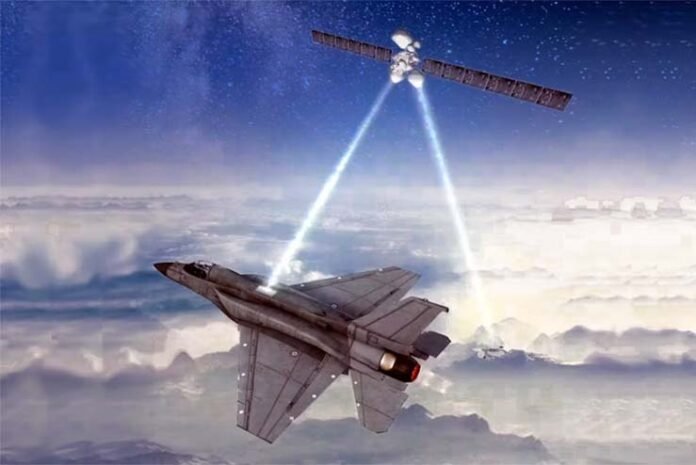The Indian Air Force (IAF) has developed into a cutting-edge combat force due to its perseverance and success in various missions during peace and war times. Through timely planning and initiatives, the IAF is gaining new heights, enhancing its capabilities, and preparing for future challenges. These endeavours not only showcase the IAF’s dedication but also exudes confidence and commitment to become an unparalleled force.
Brief History
The IAF was first constituted on October 8, 1932. The inaugural AC flight was established on April 1, 1933, and included six RAF-trained commanders and 19 Havai Sepoys (air soldiers). Then, the aircraft inventory included four Westland Wapiti IIA army cooperation biplanes at Drigh Road, which served as the foundational “A” Flight for the envisaged No.1 (Army Cooperation) Squadron.
January 1950 was a significant turning point in the history of the IAF. With India becoming a Republic within the British Commonwealth, the IAF made a symbolic transition by relinquishing its ‘Royal’ designation. This momentous event marked a significant shift in the IAF’s identity and its role in the country’s defence. At this juncture, it had six fighter squadrons comprising Spitfires, Vampires, and Tempests, stationed at Kanpur, Poona, Ambala, and Palam, with one B-24 bomber squadron, one C-47 Dakota transport squadron, one AOP flight, a communications squadron at Palam, and an expanding training organisation.
The nation should be proud of the military’s accomplishments since, historically and currently, when called upon by the country, the IAF has worked with the Army as an equal partner to accomplish national objectives
The essential functions of air power enabled the successful execution of various missions over the years. Further, the efficient use of air power has undeniably reduced fatalities and significantly shortened the timeframe in which the Army and Navy can succeed in their respective domains. ‘Operation Safed Sagar’ witnessed a far greater use of airpower compared to the IAF’s activities in the region during 1947-48, when IAF Tempests conducted strafing and rocket assaults on invaders, while Dakotas transported and paradropped soldiers and supplies. The nation should be proud of the military’s accomplishments since, historically and currently, when called upon by the country, the IAF has worked with the Army as an equal partner to accomplish national objectives.
Modernisation Initiatives
Through various modernisation programmes, innovations, and strategic objectives, the IAF is achieving new levels of robustness. Some of the most critical areas in which the IAF is making substantial development are as follows:
- Indigenous Aircraft Development: In a significant impetus towards self-reliance, the IAF is fostering the development of indigenous aircraft, such as the Tejas Light Combat Aircraft (LCA) and the Advanced Medium Combat Aircraft (AMCA), thereby reducing its dependence on imports and bolstering national pride.
- Inductions and Upgradation of Aircraft Fleets: To improve its capabilities in the battlefield, the IAF is now modernising its fleet with cutting-edge aircraft such as Rafale, Tejas, and Apache helicopters. The IAF has recently enhanced its combat capabilities by introducing the highly versatile Rafale fighter planes. Simultaneously, the IAF is upgrading its existing aircraft fleet, which includes the Sukhoi Su-30MKI, Jaguar, and the Mirage 2000, with state-of-the-art avionics and armaments.
- Capabilities in Space: The IAF is working to improve its communication, navigation, and surveillance capabilities by developing its space-based capabilities by adding space assets, like satellites and ground stations.
In a significant impetus towards self-reliance, the IAF is fostering the development of indigenous aircraft, such as the Tejas Light Combat Aircraft (LCA) and the Advanced Medium Combat Aircraft (AMCA)
Developments in Aerospace
The GSAT-7 is a military communication satellite developed by the Indian Space Research Organisation (ISRO) for the Indian Navy. It provides multi-band communications and a secure, real-time communication link between land, ships, submarines, and aircraft. GSAT-7A is the first specialised military communications satellite for the IAF, and it was launched on 19 December, 2018. It offers both secure and encrypted communication capabilities. The IAF intends to launch GSAT-7B, a second specialised military communications satellite, to improve its capabilities in terms of communication significantly.
India has its own satellites and ground stations to conduct space-based surveillance to keep an eye on operations in space and identify potential dangers. The IAF is responsible for monitoring space weather phenomena such as solar flares and geomagnetic storms to forecast the impact these events may have on space-based assets. For the detection and tracking of space objects, the IAF employs radar, optical, and electronic sensors to identify and track space objects such as satellites, debris, and missiles. The IAF has developed a Space Situational Awareness (SSA) system to monitor and track objects in space, improving its space surveillance capabilities.
The IAF enhances its navigational capabilities by using satellite-based navigation technologies, including the Indian Regional Navigation Satellite System (IRNSS), while reducing dependence on foreign systems like GPS. The IAF is developing a satellite-based augmentation system (SBAS) to enhance the accuracy and reliability of satellite navigation.
The IAF employs space-based assets to gather intelligence, surveillance, and reconnaissance (ISR) data and assess battle damage. The utilisation of satellites for detecting and monitoring ballistic missiles enables the IAF to issue early warnings for potential threats to relevant command and control centres.
The IAF has successfully built a Cyber Warfare Suite to carry out cyber operations, including offensive and defensive operations. The IAF has adopted stringent network security measures to safeguard its networks from being attacked by cybercriminals
Capacity Building
Through achieving various milestones, the IAF has demonstrated its dedication to developing its cyber warfare capabilities and space assets to improve its operational efficiency and safeguard its assets against new threats.
The IAF has shown the capability of Anti-Satellite (ASAT) missiles to destroy adversarial satellites in low Earth orbit. The development of Space Electronic Warfare (SEW) capabilities, enabling the IAF to disrupt and deceive communications from enemy satellites, is underway.
Cyber Warfare: The IAF is working to improve its capabilities in the area of cyber warfare to secure its networks and systems from cyber-attacks and to enhance operational security. The IAF has successfully built a Cyber Warfare Suite to carry out cyber operations, including offensive and defensive operations. The IAF has adopted stringent network security measures to safeguard its networks from being attacked by cybercriminals. To improve its soldiers’ capabilities in cyber warfare, the IAF is now undertaking cyber training exercises.
Collaboration with the Indian Space Research Organisation (ISRO): The IAF is leveraging the expertise of the ISRO to advance its space technology for military purposes, fostering optimism about the future of Indian space technology.
Jointness and Integration with Other Services: The IAF is closely collaborating with the Indian Army and Navy to enhance the interoperability and joint operations of the combined forces. This collaboration is evident in the regular joint war games and exercises conducted by the IAF and other Armed forces, which are designed to impart realistic training and enhance the readiness of the combined forces.
Development of Human Resources: The IAF places a strong emphasis on human resource development, which includes training and skilling efforts. This focus on human resource development is aimed at ensuring that its air warriors are equipped to work with cutting-edge technologies and are prepared for the challenges of modern warfare. The IAF’s commitment to pilot training, skill development, and welfare activities is a testament to its dedication to enhancing its operational crew’s capabilities.
Development of Infrastructure: The IAF is now in the process of modernising its infrastructure, which includes airbases, ground-based Air Defence systems, logistics, and security, to support its growing capacities for the execution of sophisticated missions.
International Cooperation: To strengthen its worldwide presence and capabilities, the IAF is participating in HADR missions as well as international exercises, global collaborations, and international partnerships.
The IAF is, in fact, achieving new heights, increasing its capabilities, and becoming ready for problems that may arise in the future. These endeavours are evidence that the IAF is dedicated to reaching new heights and improving its capabilities to confront the challenges arising in the security realm
In sum, the rich history of the Indian air operations adds to the IAF’s unwavering resolve. As the IAF ascends the ladder to greater heights, its operational capabilities embody diligence, determination, and commitment to the assigned missions.
Air Chief Marshal VR Chaudhari stated at the Air Force Academy at Dundigal, near Hyderabad, that contemporary warfare is a dynamic and ever-changing environment in an era characterised by the growing impact of emerging and sophisticated technological advances, like AI & ML, Quantum Computing, IoT, cyber and Hypersonic techniques. Adaptation, innovation, and the utilisation of technology are all necessary in order to demonstrate decisiveness in the process of winning battles.
Through the implementation of these efforts, the IAF is, in fact, achieving new heights, increasing its capabilities, and becoming ready for problems that may arise in the future. These endeavours are evidence that the IAF is dedicated to reaching new heights and improving its capabilities to confront the challenges arising in the security realm.
-The writer is a Senior Fellow at the Centre for Air Power Studies. Prior to this he was Group Captain in the IAF. He served the IAF for more than three decades in various capacities. He was Director Air Staff Inspections and retired as Director, Joint Control and Analysis Centre. The views expressed are personal and do not necessarily reflect the views of Raksha Anirveda






